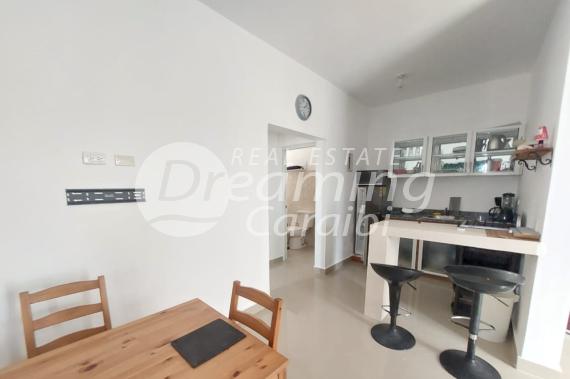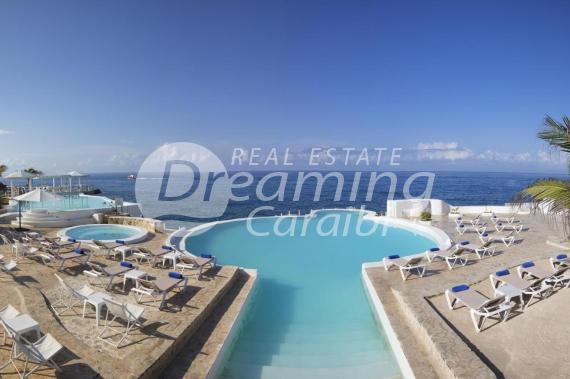Holidays in Santo Domingo
Some things you have to knowHolidays in Santo Domingo: 8 things you should know
Before going on vacation abroad, it is normal to find out the destination you choose. Many write to me for information about the Dominican Republic, for example, if it is dangerous (read But is Santo Domingo dangerous?): It is a destination that can be visited with complete peace of mind with the appropriate precautions that would be taken everywhere. Here are some frequently asked questions asked by those who decide to go on vacation to Santo Domingo. And related answers.
Holidays in Santo Domingo: 8 things you should know Here are some things you should know and some tips for a vacation in Santo Domingo, which you can organize by contacting me or using the Momondo.it website
1) What is the correct period?
The Dominican Republic is an ideal destination throughout the year because it always has a warm climate. From December to April the temperature is very sweet and pleasant. During the summer, temperatures are higher due to humidity, but never exceed 37 degrees. January and February are the ideal months for mild heat and pleasant water temperature. Winter is considered high season, low summer season. As for the documents for Santo Domingo, a passport with a validity of 6 months is required.
2) How to get to the island
The Dominican Republic has charter flights such as Neos, Meridiana, Blue Panorama (see also the direct flight Milan Santo Domingo since December 21, 2018) and regular flights such as Air France through Paris, Iberia and Air Europe via Madrid, American Airlines via New York or Miami. There are 8 international airports: Las Américas Santo Domingo, Gregorio Luperón Puerto Plata (read 5 good reasons to take vacations in Puerto Plata), Punta Cana, La Romana, Santiago, El Catey Samana, Maria Montes Barahona. And 2 nationals: La Isabela Santo Domingo and El Portillo in Las Terrenas.
3) Can I travel with children?
Many hotels and villages in the Dominican Republic offer solutions for families and children rich in entertainment and recreational activities (see also Looking for children's villages in Santo Domingo? Here they are).
4) I have an animal, can I take it with me?
Of course! To bring dogs and cats to the Dominican Republic (for more information on how to take a cat on an airplane), the following documents must be presented at customs: full vaccination certificate issued by a regularly recognized veterinarian, certificate of good health issued no later than 15 days before departure, rabies vaccination certificate, passport. In the case of non-conforming documents or in the absence of such documents, the animal will be subject to a quarantine period that can vary from 8 to 30 days.
5) Can I use my credit card?
Major credit cards are accepted at all hotels, restaurants, shopping centers and luxury stores and car rental companies. While it is good to have cash in isolated areas. The currency of Santo Domingo is the peso whose symbol is RDS. All currencies, including the euro, can be exchanged for Dominican pesos. Currency exchange in Santo Domingo can be done at the exchange offices of the airport or in tourist places and in large cities, in large hotels or in banks.
6) Can you do water sports? If so, where?
Si se pregunta qué hacer en Santo Domingo, le diré que entre las muchas cosas que puede hacer deportes acuáticos porque la República Dominicana es un destino ideal para practicar deportes. Entre Costambar, Cabarete (también leída Cometa en Cabarete: famoso destino para deportes acuáticos) y Sosua, la costa ofrece profundidades excepcionales para el buceo como Las Palmas, Ariport Walls, Five Rocks y Pyramide. En Cabrera, los expertos en buceo pueden descubrir, después de pasar por algunos túneles subterráneos, cuevas que dan la bienvenida a lagos de agua dulce. Cerca de Las Galeras, en cambio, hay una pared submarina de 54 metros de profundidad cubierta de coral. A lo largo de la costa sur, se merecen el parque marino de La Caleta, un verdadero paraíso para el buceo gracias a la diversidad de fauna y arrecifes de coral, la isla Catalina con un amplio arrecife de coral (Saona y Catalina: ¿excursión grupal o privada?) y el museo en vivo bajo el Mar. Pero el sitio más famoso de toda la República Dominicana para el surf es Cabarete, donde hay muchas escuelas de surf. No hay arrecifes de coral en la costa y en la tarde, cuando soplan los vientos alisios, se forman grandes olas.
7) Where and what to buy souvenirs to pack in your suitcase?
During your trip to Santo Domingo you can not stop buying typical Dominican objects. In the colonial neighborhood of the capital, Santo Domingo, the Mercado Modelo is one of the most typical places for shopping in the capital. In this part of the city you can also go shopping in El Conde street or Duarte street. In addition, Santo Domingo has many shopping centers, and the most famous and characteristic are Acropolis, Bella Vista Mall, Blue Mall. In the area of Puerto Plata, known for its jewels and local souvenirs, you can enjoy the typical bazaars or on the street Beller In Altos de Chavón and in the La Romana area, on the other hand, purchases can be made in numerous art galleries or in small shops. As for what to buy, in addition to the amber of which the Dominican Republic is one of the main producers, you can buy Larimar, a turquoise semi-precious hard stone that is only found in the Dominican Republic. Then, the black coral; terracotta pottery and, in particular, figures painted with mocha and high Cibao, leather accessories (typical footwear, sandals, belts ...); objects in bone and turtle shell; the mother of pearl; cigars local rum; acaju wood objects; finally the naive style paintings and the famous merengue and bachata Dominican music. Purchases can be paid in pesos, dollars, euros or in the main credit cards. leather accessories (typical footwear, sandals, belts ...); objects in bone and turtle shell; the mother of pearl; cigars local rum; acaju wood objects; finally the naive style paintings and the famous merengue and bachata Dominican music. Purchases can be paid in pesos, dollars, euros or in the main credit cards. leather accessories (typical footwear, sandals, belts ...); objects in bone and turtle shell; the mother of pearl; cigars local rum; acaju wood objects; finally the naive style paintings and the famous merengue and bachata Dominican music. Purchases can be paid in pesos, dollars, euros or in the main credit cards.
8) What are the typical dishes?
During a vacation in Santo Domingo, you cannot miss Dominican Creole cuisine, the best in the Caribbean. Thanks to its cultural mix, the Dominican Republic offers a variety of dishes in which Taino, Creole, European and African influences are combined in a tasty way. The most typical dish is the flag made with meat, rice, beans (white, red or black), vegetables and fried plantains. Then honor the sancocho, a kind of soup with 7 different meats, a variant of the Spanish boiled prepared differently in each region. Another typical dish is the mangu, a banana crushed with oil and served with fried onion. Fish with coconut di Samana (fish cooked in coconut milk) and goat meat are very popular; the child eats roasted in a mixture of herbs, lime and garlic (roasted goat) or stew (goat stew) or accompanied by a wine sauce (caprone with wine). Finally, the locrio, similar to risotto, made with chicken or sausage and the mondongo, an excellent stewed gut. The most typical dessert is dulce de leche, a sweet milk that is also full of tropical fruit jams. Papaya, passion fruit, pineapple and mango belong to the typical fruit of Santo Domingo.










